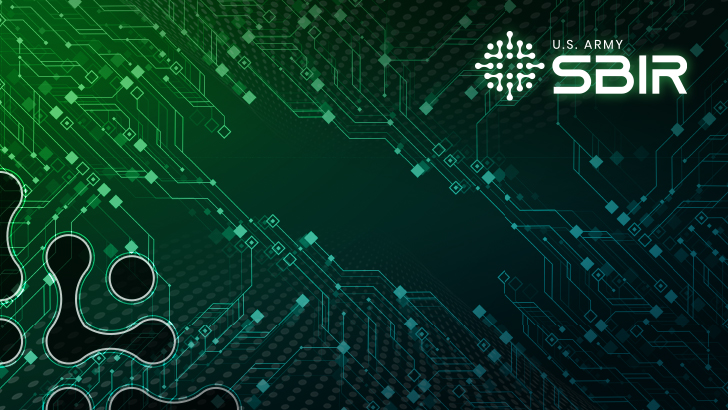

Objective
Perform preliminary design of autonomous, robust, and versatile perching capabilities with an unmanned air vehicle to enable persistent intelligence, surveillance, and reconnaissance (ISR).
Description
Small unmanned air vehicles (UAVs) have demonstrated the ability to autonomously plan trajectories that allow them to maneuver through tight spaces [1], precisely land on moving platforms [2], and even perch onto various targets in the environment (poles, rods, cables, walls, tree branches, etc.) [3]. Perching has been accomplished through grippers [4], magnets [5], adhesives [6, 7], modular/actuated landing gears [8], and metamorphic frames [9]. UAVs have demonstrated perching on targets with horizontal [10], vertical [11], inclined [12], and even inverted [13] orientations.
Perching capabilities have been largely demonstrated in laboratory settings with the assistance of indoor cameras systems that provide accurate UAV state information to assist in perching on the desired target. The limited outdoor demonstrations of perching capabilities could be combined with recent advances in vision-based navigation algorithms to enable autonomous perching solely using onboard sensors [14]. Perching can offer significantly reduced energy usage compared to the power required for hovering, but energy expenditure may not be zero. Novel methods to recharge UAVs through powerlines [15] and photovoltaic cells [16] could be used to extend perching endurance for persistent ISR.
The goal of this SBIR is to review the state-of-the-art and the capabilities of existing systems and then perform a thorough preliminary design of a system that would be capable of performing the persistent intelligence, surveillance, and reconnaissance mission. The preliminary design should include, at a minimum, coverage of the platform, perching method/mechanism/algorithms, sensor payload(s), and recharging capability with respect to anticipated energy demand. The design should be able to identify a target perch location using onboard sensors and then autonomously navigate towards and robustly perch onto the target in an orientation that allows it to direct onboard sensors at a desired target location to provide persistent ISR.
Phase I
Detailed design and data package fully describing the candidate platform, perching method/mechanism/algorithms, sensor payload(s), and recharging capability will be submitted. The data package should include detailed description of modeling, analysis, and simulation activity used to determine that the system will be capable of satisfying mission requirements.
Phase II
Required Phase II deliverables include a demonstration with a prototype UAV autonomously perching onto realistic environments and providing ISR on a target location using multispectral sensors. The UAV shall be able to robustly perch onto the target and remain perched in wind conditions gusting up to 10 knots. The UAV must be able to remain perched without the use of propulsion and increase the charge on the vehicle’s battery by extracting energy from the environment. A report detailing the UAV’s dynamic response, flight control system, autonomy, perching mechanism and maneuver, and test results will be submitted.
Phase III
This capability could be used in military applications to deploy UAVs into contested areas for ISR while perching for concealment and endurance.
Submission Information
Submit in accordance with DoD SBIR BAA 23.2

References:
Objective
Perform preliminary design of autonomous, robust, and versatile perching capabilities with an unmanned air vehicle to enable persistent intelligence, surveillance, and reconnaissance (ISR).
Description
Small unmanned air vehicles (UAVs) have demonstrated the ability to autonomously plan trajectories that allow them to maneuver through tight spaces [1], precisely land on moving platforms [2], and even perch onto various targets in the environment (poles, rods, cables, walls, tree branches, etc.) [3]. Perching has been accomplished through grippers [4], magnets [5], adhesives [6, 7], modular/actuated landing gears [8], and metamorphic frames [9]. UAVs have demonstrated perching on targets with horizontal [10], vertical [11], inclined [12], and even inverted [13] orientations.
Perching capabilities have been largely demonstrated in laboratory settings with the assistance of indoor cameras systems that provide accurate UAV state information to assist in perching on the desired target. The limited outdoor demonstrations of perching capabilities could be combined with recent advances in vision-based navigation algorithms to enable autonomous perching solely using onboard sensors [14]. Perching can offer significantly reduced energy usage compared to the power required for hovering, but energy expenditure may not be zero. Novel methods to recharge UAVs through powerlines [15] and photovoltaic cells [16] could be used to extend perching endurance for persistent ISR.
The goal of this SBIR is to review the state-of-the-art and the capabilities of existing systems and then perform a thorough preliminary design of a system that would be capable of performing the persistent intelligence, surveillance, and reconnaissance mission. The preliminary design should include, at a minimum, coverage of the platform, perching method/mechanism/algorithms, sensor payload(s), and recharging capability with respect to anticipated energy demand. The design should be able to identify a target perch location using onboard sensors and then autonomously navigate towards and robustly perch onto the target in an orientation that allows it to direct onboard sensors at a desired target location to provide persistent ISR.
Phase I
Detailed design and data package fully describing the candidate platform, perching method/mechanism/algorithms, sensor payload(s), and recharging capability will be submitted. The data package should include detailed description of modeling, analysis, and simulation activity used to determine that the system will be capable of satisfying mission requirements.
Phase II
Required Phase II deliverables include a demonstration with a prototype UAV autonomously perching onto realistic environments and providing ISR on a target location using multispectral sensors. The UAV shall be able to robustly perch onto the target and remain perched in wind conditions gusting up to 10 knots. The UAV must be able to remain perched without the use of propulsion and increase the charge on the vehicle’s battery by extracting energy from the environment. A report detailing the UAV’s dynamic response, flight control system, autonomy, perching mechanism and maneuver, and test results will be submitted.
Phase III
This capability could be used in military applications to deploy UAVs into contested areas for ISR while perching for concealment and endurance.
Submission Information
Submit in accordance with DoD SBIR BAA 23.2
References:
